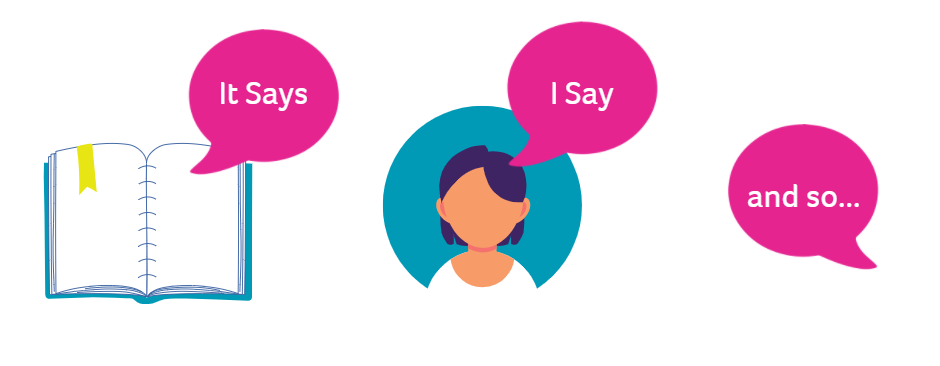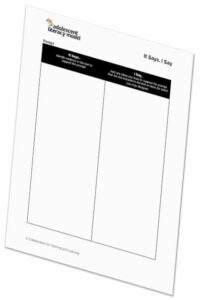STRATEGY FOCUS
It Says-I Say-and So
PURPOSE
This strategy is meant to support students as they summarize, react to, and make inferences about text. Teachers may provide a four column graphic organizer as a place for students to record their thinking.

PROCESS
- Create questions for students to respond to as a result of the assigned reading.
- Invite students to use a graphic organizer (see examples below) as they read to collect their thinking. Label the sections: Question(s), It Says, I Say, and So.
- The teacher poses questions for students to explore in the “Question” column.
- As students read, they capture in writing what the text says, their own thinking about the selected text, and finally a synthesis sentence to answer the initial question posed.
- Conduct class discussion to provide a time and space for students to share their thinking, hear the ideas of their peers, and to reflect on the experience.
PROBING QUESTIONS
CONSIDERATIONS
- In what ways did you find the graphic organizer helpful?
- How might you modify the graphic organizer?
- Which part of It Says-I Say-And So did you find most difficult?
- Consider using the second and third columns only and invite students to capture key ideas or points from the text (It Says) and to add their own connections, questions or responses to the text (I Say).
- In addition to text, consider using images, quotes, and other interesting representations of ideas and concepts.
CONTENT APPLICATIONS

ENGLISH
LANGUAGE ARTS
Provide students with an editorial text or a review of an event. Have students use the graphic organizer to summarize the text in the second column, add their own thinking and connections in the third column, and then draw conclusions based on those columns to add to the fourth column.

VISUAL & PERFORMING ARTS
Provide students with a recording of music and ask questions. Invite students to listen and record their thinking on an It Says-I Say-And So graphic organizer. Hold class discussion so that students can share their thinking, observations, and questions with peers.
![]()
CAREER & TECHNICAL EDUCATION
As part of their work in Hospitality, provide students with various menus. Invite students to use the It Says-I Say-And So graphic organizer to record their thinking as they read and learn about various menu options. Students can be asked to consider the viability, benefits, and implications of offering such menu options in a restaurant.
![]()
MATHEMATICS
Share with students a sampling of data representations (tables,
charts, graphs, etc.). After studying the data, ask questions and invite students to use It Says-I Say-And So to record their ideas, questions ,and inferences. Students then share ideas with partners to compare and contrast.
![]()
SCIENCE
As students look at a graph showing the change in temperature over 50 years, they record what they see in the graph, what they think it means, and how that helps them answer a question or explain a phenomenon.
REPRODUCIBLE

